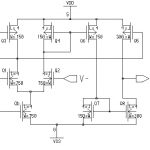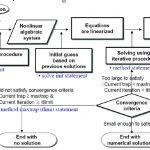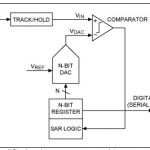As a blogger I have the privilege of meeting many IC designers from around the world, mostly through contact on LinkedIn or from connecting at trade shows. Through a contact at DACI met up with Achim Graupner, a manager of methodology and design automation from ZMDI, then asked him for an interview to understand how his group does … Read More
Author: Daniel Payne
Transistor-Level IC Design is Alive and Thriving
There’s much talk in EDA about High Level Synthesis (HLS), Transaction Level Modeling (TLM) and the Universal Verification Methodology (UVM), however there’s a lower-level of abstraction, the transistor-level, where high-speed digital cell libraries are created, analog circuits are crafted, and AMS designers… Read More
Leakage Current TCAD Calibration in a-Si TFTs
Two weeks ago I blogged about amorphous silicon and how that material is well-suited for designing TFTs. Today I’m following up after watching the archived webinarpresented by Nam-Kyun Tak of Silvaco. After clicking on that link you’ll be brought to a brief sign-up page and then can watch the archived webinar in your… Read More
Simulation and Analysis of Power and Thermal Management Policies
Earlier this month I blogged about Power Management Policies for Android Devices, so this blog is part two in the series and delves into the details of using ESL-level tools for simulation and analysis. The motivation behind all of this is to optimize a power management system during the early design phase, instead of waiting until… Read More
Using Cadence PVS for Signoff at TowerJazz
TowerJazzis a specialty foundry that provides IC manufacturing into several markets, like: RF, high-performance analog, power, imaging, consumer, automotive, medical, industrial and aerospace/defense. In June there was a presentation from Ofer Tamir of TowerJazz at DACin the Cadence theatre, so I had a chance this week … Read More
Power-Aware Verification in Mixed-Signal Simulation
My Samsung Galaxy Note 2 phone lasts about 1.5 days on a single battery charge, thanks in part to the clever power conservation approaches like when the screen is automatically dimmed then turned off after no activity. Mobile phones and many other battery-powered devices used today all need power-saving designs, which then means… Read More
Amorphous Silicon and TFTs
Most ICs are fabricated with crystalline silicon (c-Si), which is a tetrahedral structure forming a well-ordered crystal lattice. There’s another form of semiconductor material called amorphous silicon (a-Si) which has no long-range periodic order. It turns out that a-Si is a great material for the active layer in thin-film… Read More
Daylight Savings Time and the IoT
On Sunday in the USA we changed our clocks back one hour to account for Daylight Savings Time and I was reminded of how far we have to go in getting all of our devices to understand and automatically account for the time. Despite all of the talk about IoT and how it has the promise to automate our lives, we still have to manually set the time.… Read More
Debugging a 10 bit SAR ADC
SMIC (Semiconductor Manufacturing International Corporation) is a China-based foundry with technology ranging from 0.35 micron to 28 nm, and we’ve blogged about them before on SemiWiki. I’ve been reading about SMIC recently because they created a technical presentation for the MunEDA Technical Forum Shanghai… Read More
Silvaco at the TSMC 2014 Open Innovation Platform
The success of our semiconductor eco-system depends on collaboration, so the annual TSMC OIP Event just held on September 30 at the San Jose Convention Center was a prime example of that. I didn’t attend this year, but I did follow up with Amit Nandaof Silvaco this week to hear about what they presented. As a consultant I’ve… Read More















AI RTL Generation versus AI RTL Verification